By Francesca Nicasio, Vend
www.vendhq.com
Retail merchandising is one of those things that can make or break the success of your store. When implemented correctly, visual merchandising can lead customers to the right products, entice them to buy and create an excellent in-store experience. But do it wrong, and you’ll drive people away.
Retail merchandising, often referred to as “visual merchandising,” is the act of showcasing products to attract shoppers and generate sales. Product presentation is a key component in this practice. Good retail merchandisers are skilled at optimizing how products are displayed in-store and ensuring that their features and benefits are highlighted.
To help keep people in your store — and convert them into paying customers — here are some expert-backed tips and insights on retail merchandising. Go through the pointers below and see how you can apply them to your retail store.
1. Develop a customer-centric merchandising strategy.
Retail merchandising success starts with having the right knowledge, and the best information always comes straight from your shoppers. For this reason, it’s important to involve your customers in the planning stage of your merchandising initiatives. You can do this by having conversations with your target shoppers. “Speaking to customers is a cliche, but I’ve realized that few retailers actually do it right,” said Fu Fei, then a co-founder at Haste, a product analytics solution for retailers. Fei recommended a three-step process that will allow you to hone in on the best merchandising insights:
Step 1: Come up with a hypothesis.
Identify a hypothesis or assumption you have about your shoppers’ preferences or behavior. For instance, if you’re a hardware store, a hypothesis could be that a customer is coming into your store to purchase a drill for their DIY projects.
Step 2: Speak to your customers to validate your hypothesis.
Already identified your assumption? Verify it by gathering info directly from your customers. You can do this by sending a survey or simply by chatting with them on the sales floor. In the example of the hardware store, you might find that your hypothesis is correct and that customers buy your drills primarily for DIY projects. But there’s also a chance that your assumptions are wrong and the real reason they buy drills is to deal with repairs and maintenance issues in their homes. Whatever the case, the only way to figure it out is to do your customer research.
Step 3: Plan your assortment.
Use the info you gathered to plan your assortment. So if your DIY assumption is correct, you could create displays featuring the drill being used in DIY projects. On the other hand, if you discover that your customers are using your drills for something else, you can take a different approach.
The key, added Fei, is to be systematic. “A systematized approach to customer interviews and tracking of sales data can go a long way to improving in-store merchandising.”
2. Make your window display count.
Already have a strong merchandising concept in mind? One of the best places in which to bring it to life is your window displays. Start by choosing the right theme for your windows. As Meaghan Brophy, a senior retail analyst at Fit Small Business put it: “Window displays need to grab the attention of passersby while also being welcoming and inviting. Retailers can accomplish this by using bright colors, sticking to a theme and steering clear of clutter.” Also place items at eye level. You know what they say: “Eye level is buy level.” Pick out the key products to showcase in your display and position them at eye level.
3. Turn your staff into retail merchandising statements.
Visual merchandising isn’t just about fixtures and displays. Your employees should also play an active role in showcasing your products. This is particularly useful when you’re selling slow-moving stock, said Chris Guillot, a retail consultant and the founder of Merchant Method.
According to Guillot, your sales team can be utilized as “mobile merchandising statements that help move your products.” Guillot said: “Say you lead a store that sells kitchen and entertaining merchandise. You might have these seasonal-print aprons that are slow moving. Your week-long focus could be around hosting a dinner party, and maybe your employees could wear those seasonally focused aprons all week long while on the sales floor. Doing this gives a reason and an occasion to speak about a particular item more.”
4. Leverage informational signage.
Put retail signage to good use by making sure it aids the shopping experience. Stan Tan of Selby’s recommended leveraging informational signage to make it easy for customers to locate the items they need.
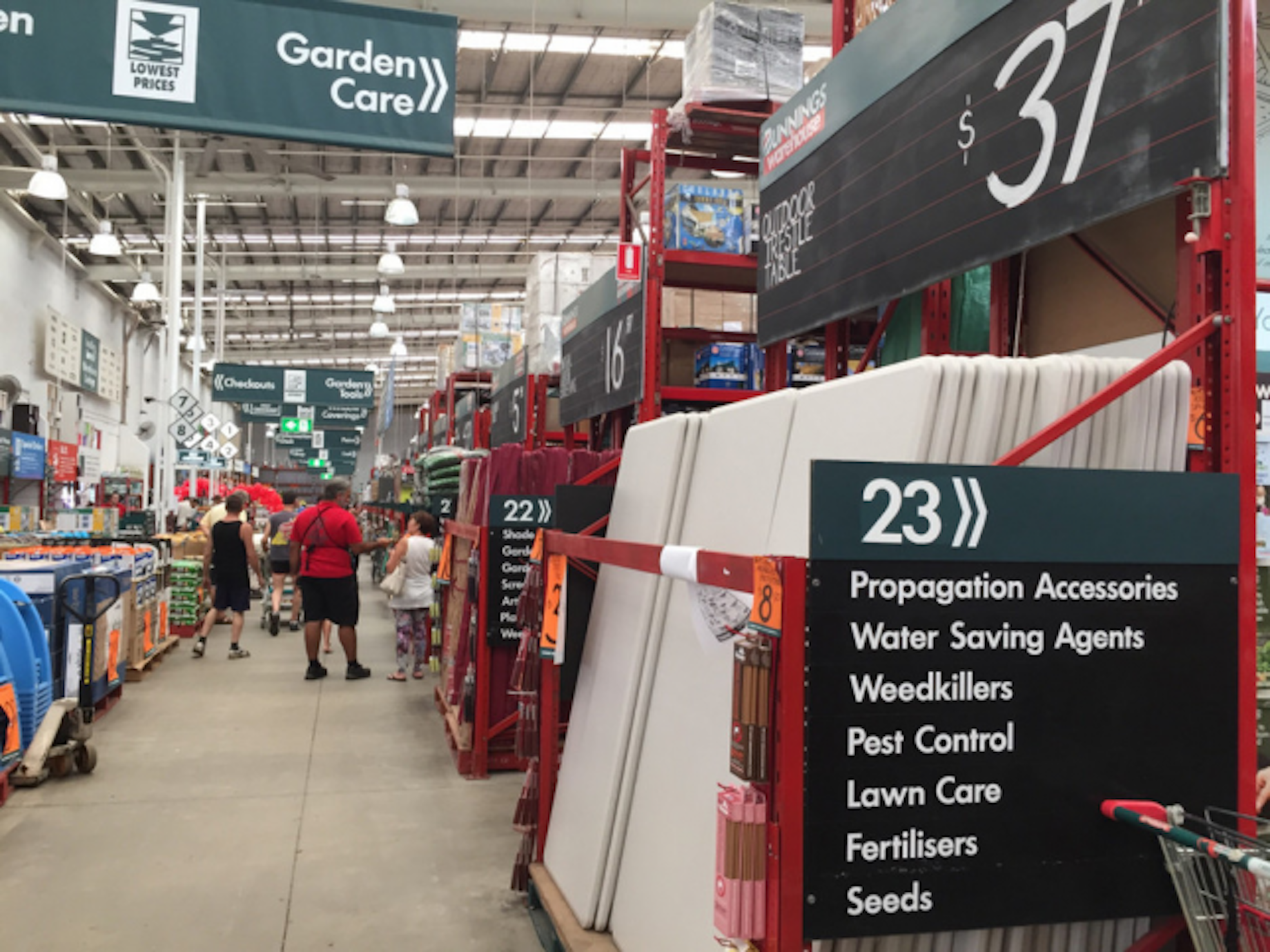
Bunnings home improvement and hardware store is “so dominant in Australia that people search ‘Bunnings’ more than ‘home improvement stores’ or ‘hardware stores,’” said Selby’s Stan Tan. “The signage isn’t complicated, fancy and doesn’t require any AI or technology. It is back to the retailing 101 basics: improve the customer’s shopping experience.
5. Keep things fresh.
“The easiest thing retailers can do to improve their merchandising strategy also doesn’t cost a thing,” said Brophy. “Change your product displays regularly to keep customers interested and products looking fresh. Focus on the big displays in the front of your store; change them up to highlight new and seasonal products once a week. And don’t neglect your window display. Make sure you’re showcasing timely, popular and interesting products.” Stay on schedule by using a merchandising calendar. And remember that the frequency for how to switch up your merchandising also depends on the season. Most experts recommend changing up in-store displays once a week and window displays at least twice a month, but you may need to do these things more often if you’re in a high-traffic location or if you’re in the middle of an important shopping season like the end-of-the-year holidays.
6. Implement cross-merchandising.
Identify products in your store that would go well together and put them in a single display. View your merchandise from a customer’s perspective. For example, if you were a shopper looking at a particular dress, is there anything in the store that would go well with it?
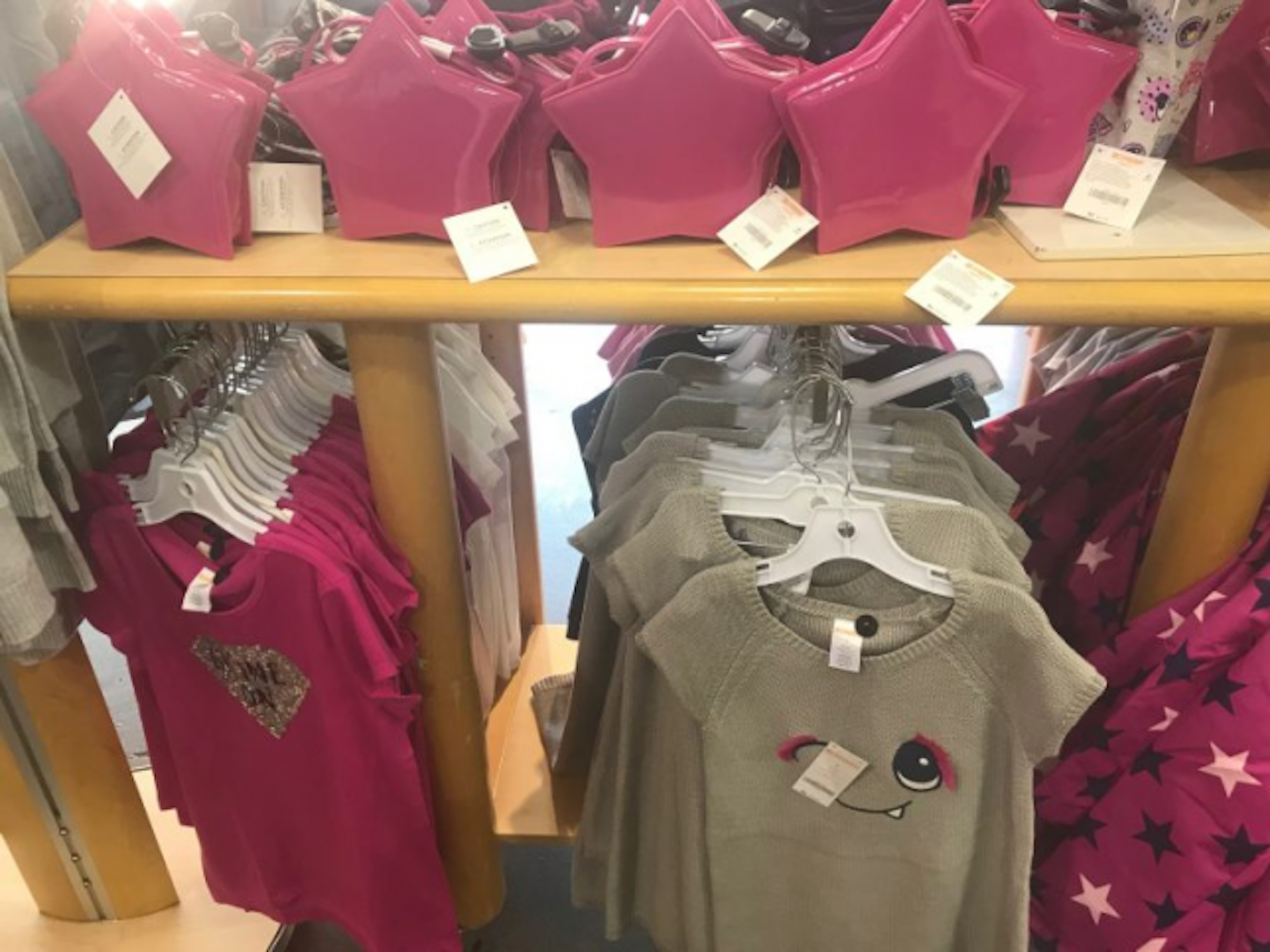
This Gymboree display cross-merchandises a range of shirts and sweaters with a matching purse.
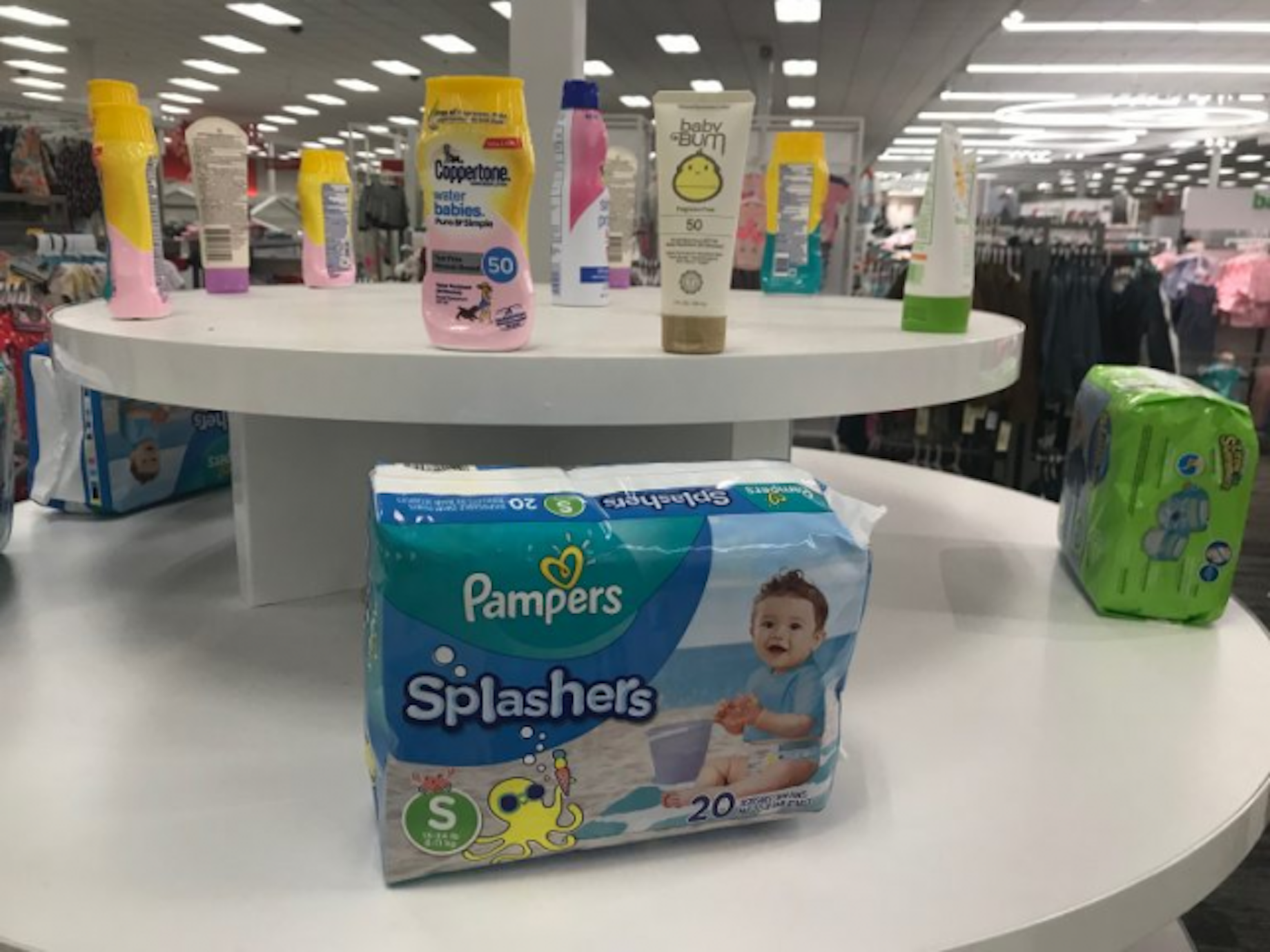
Here’s a cool example from Target. The top shelf showcases different brands of sunblock for kids, while the shelf below displays swim diapers. Target knows that customers shopping for swim diapers will likely need sunblock and vice versa, so it cleverly put the products together.
7. Use in-store tech.
In-store technology can enhance the in-store experience and encourage customer engagement. Tablets, for instance, can offer more product information and help shoppers select the right items to buy.
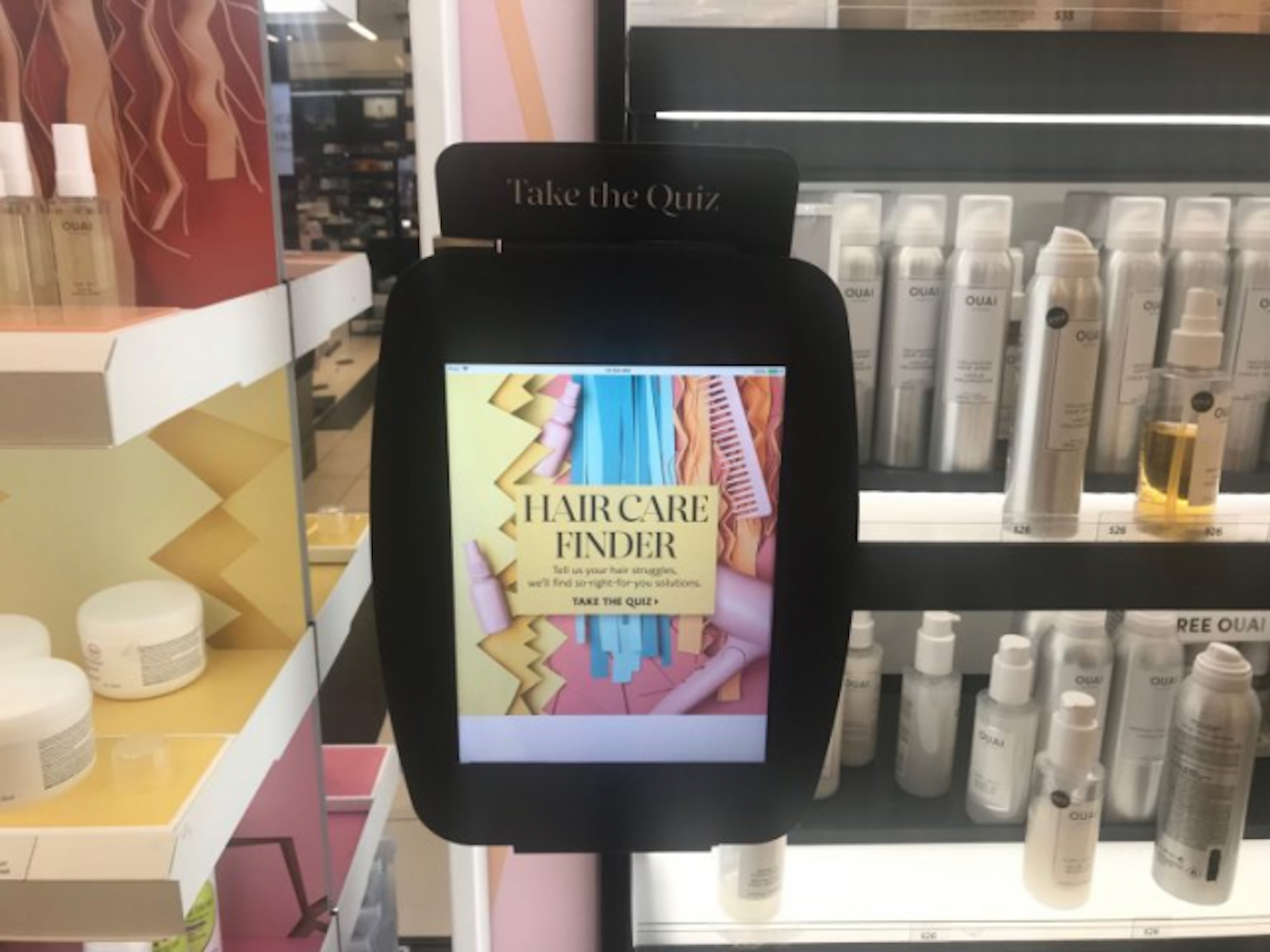
Some of Sephora’s displays have interactive screens attached to them so buyers can explore product details and take beauty quizzes that point them to the right products.
8. Implement try-before-you-buy.
“My No. 1 retail and sales tip is utilizing the try-before-you-buy approach,” said Liliana Aranda, owner and esthetician at Faces by Liliana. “I have a tray present at the spa guest station with a body oil and hand cream dispenser set that allows the guest to try the monthly featured products. We also sample new items after facial services, along with a skincare planner that allows the guest to maintain their spa quality results at home.” Consider implementing a similar strategy in your store. Showcase your products in such a way that people can sample the merchandise for themselves.
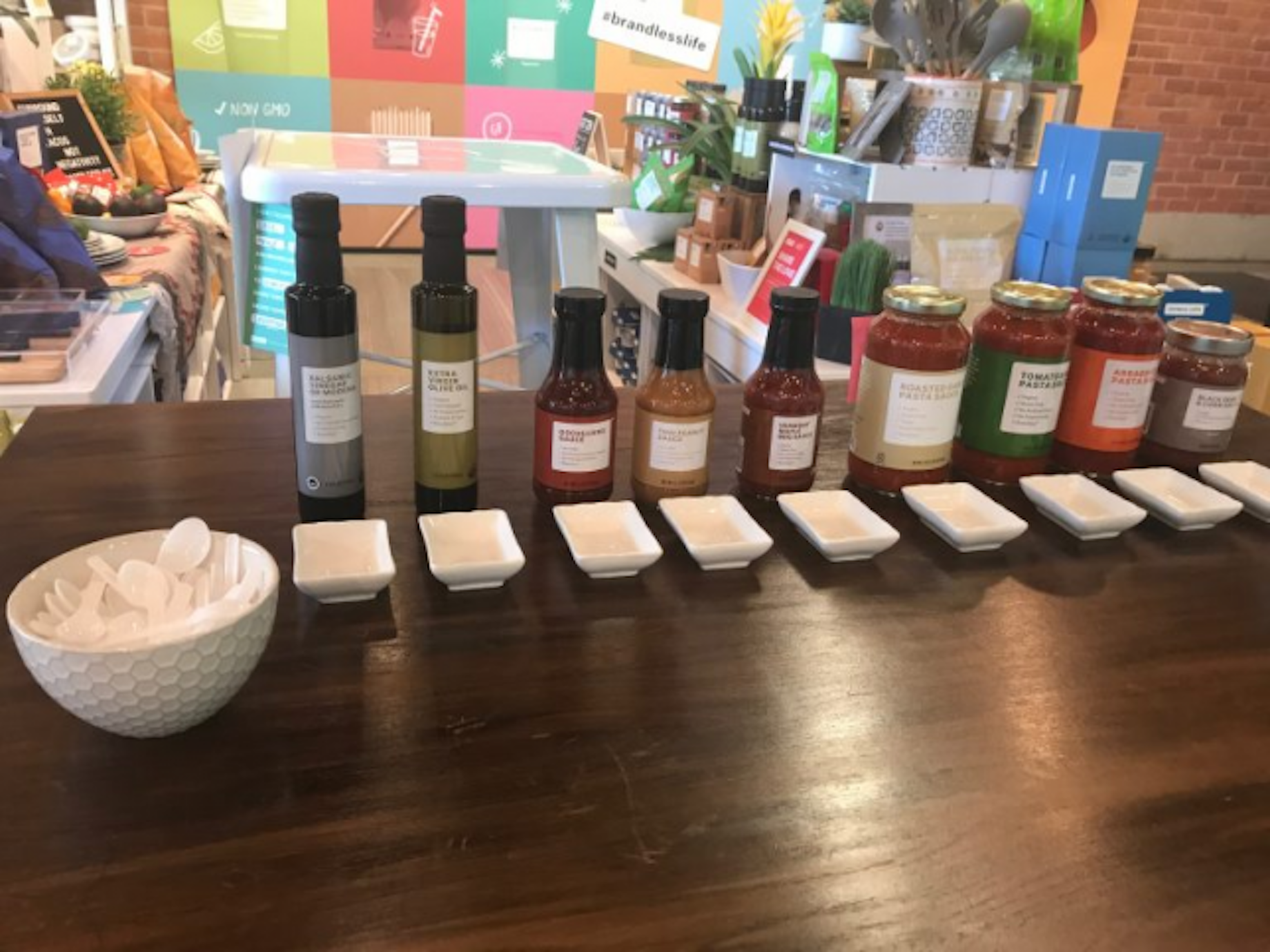
Brandless ran a pop-up in Los Angeles in 2018 with a station for trying different olive oils and sauces.
9. Monitor your sales per category.
Once your merchandising campaigns are out there, it’s important to continue gathering data to optimize your visual merchandising efforts. There are many useful retail metrics and key performance indicators to track, but one thing you should never ignore is your sales per category. “Sales per category or sales per department measures your total sales for each type of product,” Brophy said. “This information is useful because it shows which types of products are bringing in the most money and usually points to your most popular products. If one or a few categories are consistently outselling others, feature those items more prominently in displays. When it comes time to restock products or introduce new merchandise, buy more products in the categories that are selling well.”
10. Create experiential retail displays.
The best retail displays aren’t just visually rich; they’re experiential, too. You can level up your in-store merchandising by adding experiential elements like:
- displays that create photo opportunities
- large or life-size models of your products
- opportunities for customers to test or experience your products
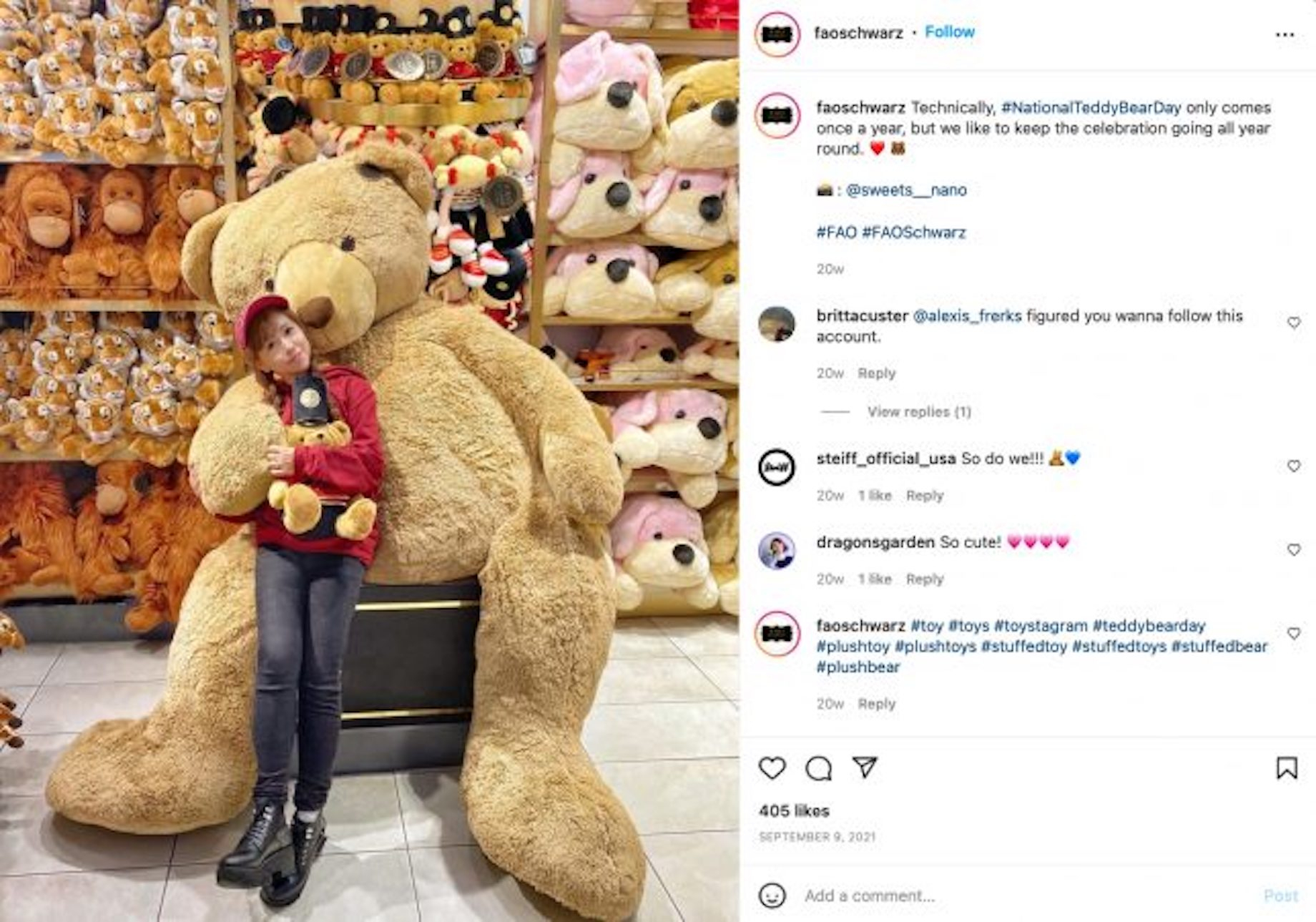
New York City-based toy store FAO Schwarz does a tremendous job with its retail merchandising strategy. Rather than just placing products on shelves, the merchandisers at FAO Schwarz create displays that are enjoyable and experiential for kids. From larger-than-life stuffed animals that kids can take photos with to immersive store-within-a-store initiatives, FAO Schwarz always comes up with interesting ways to showcase its products.
11. Don’t forget about compliance.
Last but not least is ensuring that your merchandising efforts comply with your company standards, as well as any agreements you have with other brands and vendors. “Ensuring retailer compliance is paramount to making sure retail merchandising strategies are effective,” said Victoria Vessella, who then worked at Repsly. If agreements on shelf placement and special promotions are not being upheld by the retailer or by the supplier, both parties are missing out on a huge opportunity to drive sales. Monitoring compliance with in-store data-collection tools keeps both retailers and suppliers accountable for executing on their retail merchandising agreements.”